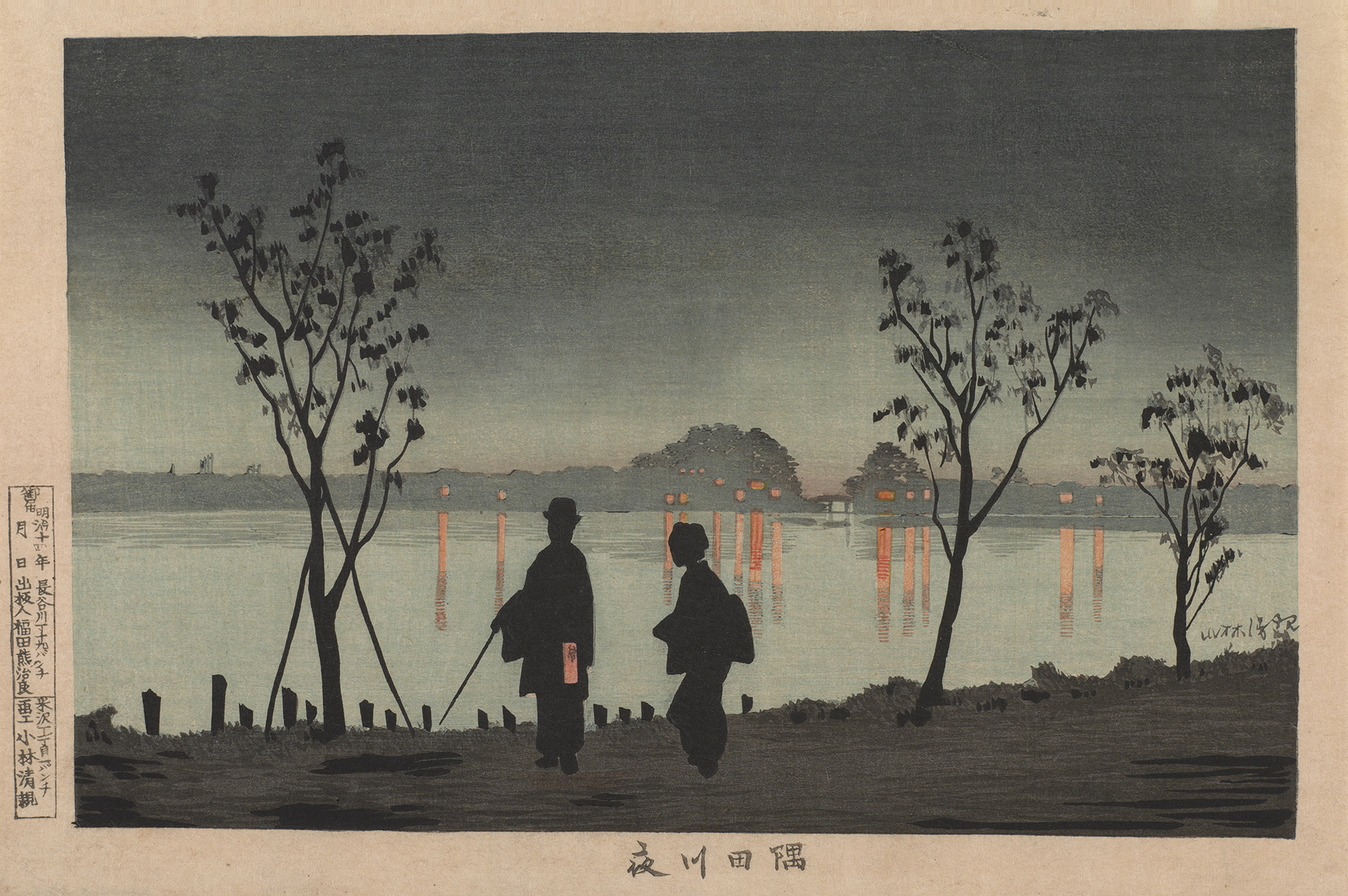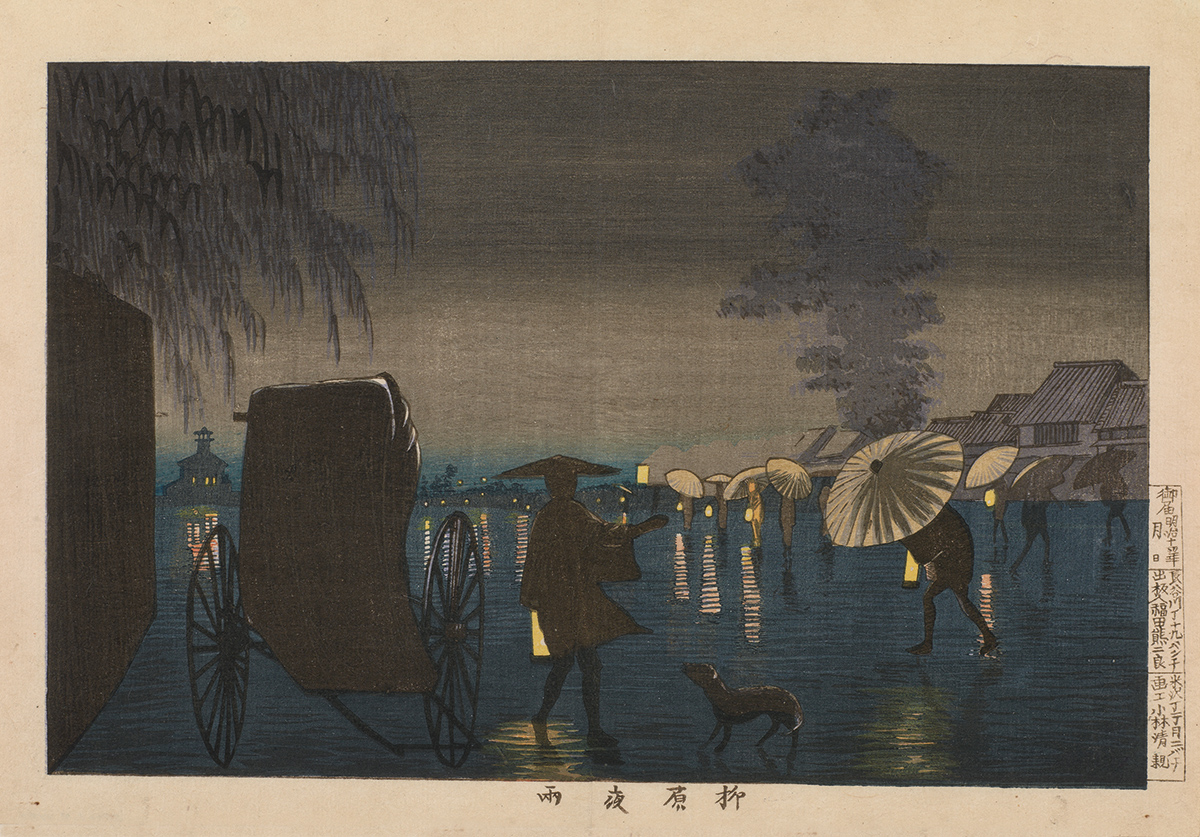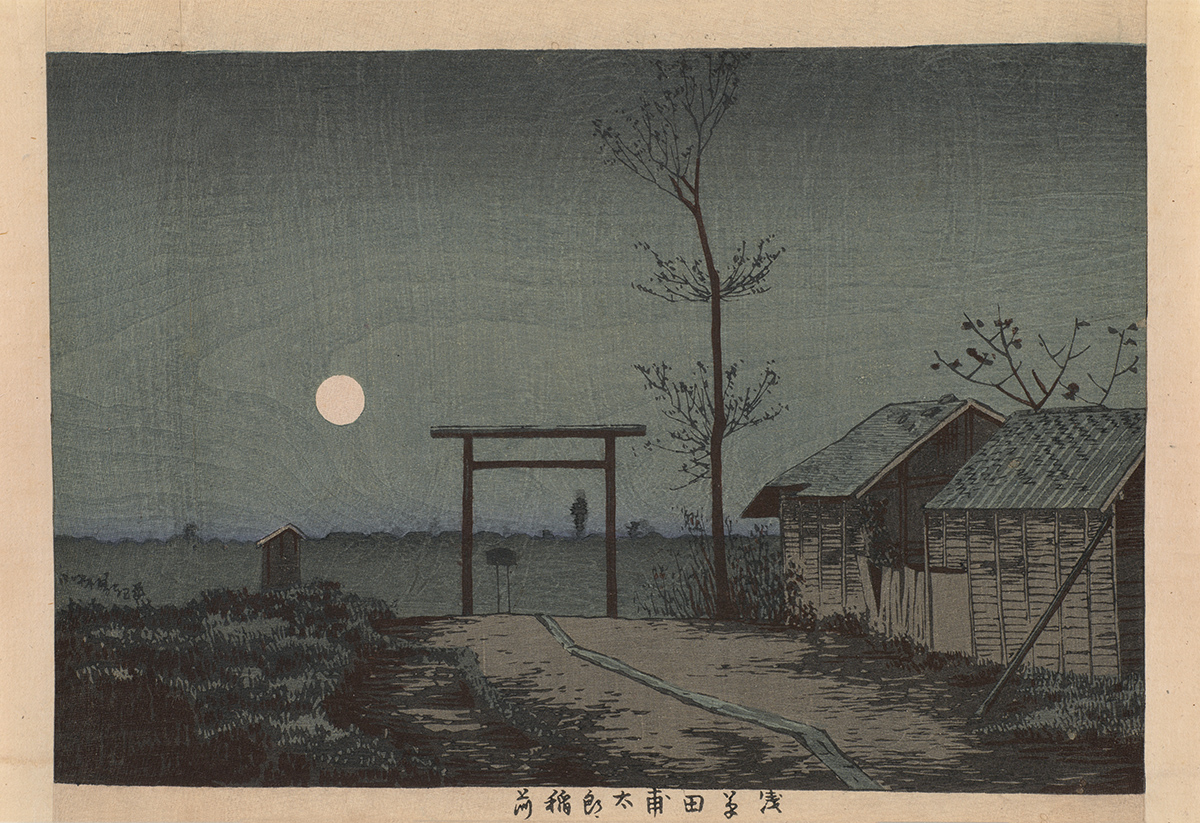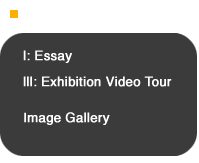
|
Introduction... |
 |
In contrast to the real world of the daytime, the night offered escape into a fantasyland—a place of liaisons, houses of pleasure, and women of the demimonde. Sumidagawa at Night (1881), showing a couple on the eastern bank of the river, has been associated with Nagai Kafū’s 1909 novel Sumidagawa. Kiyochika’s print recalls a scene in the story whereby the young protagonist Chōkichi encounters a man in black crested robes, accompanied by a woman coiffed in traditional style. She reminds him, painfully, of his childhood sweetheart Ito, who is training to become a geisha. Kiyochika employs the silhouette to powerful graphic effect. The man in the hat and walking stick evokes the later figure of Kafū himself, who consciously cultivated a flaneur style as he set forth on his city wanderings. His escapist forays often took direction of marginal and slightly seedy quarters of the east side of the river, as chronicled in Strange Tales from the East of Sumida (1937). For the writer, the Sumida River and its waterways offered passage to a place of solace, a liminal space where one could regain possession of a particular moment in the city’s Edo past. Kiyochika’s composition has a strong literary feel, and raises the question of where the man in the hat is now headed. Will he return to the other side of the river, like Kafū, to the “real” world of his home in the Yamanote? In the print, the dim contours of the rising hills of Matsuchichiyama are visible in the far distance. Next to it, we can make out the bridge of Imadobashi over the Sanya Canal—a point of access to Yoshiwara’s licensed red light district lying to the north. [S2003_8_1202] |
 |
Another composition featuring night rain is Rainy Night at Yanagiwara (1881). The place took its name after willow trees lining the stretch on the south bank of the Kanda River. The Tax Office Bureau, a faux-Western hybrid Japanese building and another favorite subject of kaika-e, is barely visible in the far distance. Obstructing the view is a covered rickshaw and a cabby arrested in mid-gesture as he calls to clients, though it is only a stray dog that takes notice. [S2003_8_1182] |
 |
A number of variant impressions were made for this design, demonstrating Kiyochika’s experimentation with tonalities. Night is not simply rendered in the classic “raven-wing” black, but expressed as a subtle array of grey, dark blue, and greenish hues. In one print, diagonal streaks of silver mica have been added, reverting to a more conventional representation of rain. [S2003.8.1181-1185] |
 |
Before Tarō Inari Shrine at the Asakusa Ricefields (1881) [S2003_8_1174] |
|
Freer Gallery of Art and the Arthur M. Sackler Gallery Smithsonian Institution |
Click here for a printer-friendly Word doc |
|
On viewing images of a potentially disturbing nature: click here |
Massachusetts Institute of Technology
© 2016 Visualizing Cultures |
 |



